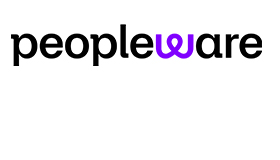Graeme Gabriel of injixo argues that Customer Satisfaction (CSAT) is more important than all other customer experience metrics combined.
Yesterday I was having a debate with my 77-year-old mum about the significance of the rate of infection (R0) metric and how the results should be interpreted.
If you had told me six months ago that I would be having a conversation about the rate of infection calculation measurement for Covid-19 with my mum I would not have believed you.
What Covid-19 Has Taught Us About Metrics
The Covid-19 pandemic has had many impacts on our daily lives, most of them negative and distressing, some positive, like the way communities have responded.
One unintended consequence is the interest that everyone now has in analytics.
The daily update from the government has triggered a discussion on social media about different KPIs and which ones should be used to gauge where nations are in the timeline of the pandemic.
As an example of how statistics can take a narrative in different directions, one contributor on a recent news item suggested that recovery rates should be published alongside death rates as a way to put a positive spin on how the fight against the disease is going.
The way that a particular measurement can influence how people feel is now something recognizable even to my mother.
Some cast doubt on the merits of increased testing (concluding that if you test more, you discover more infections and therefore the infection rate increases).
Others, like my mum, point out that testing is a necessity, since without an accurate measure of the size of the issue, you can’t introduce the appropriate mitigating steps to fight it. It turns out that regardless of age, logic driven by data is the only way to beat the pandemic.
Key Performance Indicators in Contact Centres
We have been having similar debates for years within the contact centre and we have argued which KPIs are truly reflective of how our centre is performing.
The most obvious measure has always been service level, as an indicator of customer satisfaction.
As with any measure, we need to understand both its drivers and consequences.
The main drivers of the service level metric are the number of available agents (supply) and the amount of incoming workload (demand).
So, theoretically, when you are working towards a service level target, that means that you can add more resources (increase supply) or you could maintain the level of resources and bring down the incoming workload (reduce demand).
But has anyone ever closed lines coming into the contact centre to improve service level? I haven’t.
Metrics drive behaviours and these behaviours don’t always represent the right thing to do.
Because of the maturity of the technology available to contact centres, we have many performance indicators at our disposal. Here are just a few:
- Service Level
- Average Speed of Answer
- Abandonment rate
- Occupancy
- CSAT
- Calls per hour
One Performance Metric to Rule Them All?
There are so many metrics available, some customer focused and some internally focused (like cost of call, forecast accuracy, overtime costs, employee satisfaction, etc.).
So what’s the best approach? Can we agree on the one killer KPI?
Or should we create a balanced scorecard with weightings against each?
I know of one organization that ditched the traditional statistical measurements and instead concentrated on “customer outcomes”.
They said that moving away from a rigid focus on metrics like service level was difficult, even more so when those metrics started to dip, but bravery was the key. They kept the faith and ultimately were rewarded with increased CSAT and greater revenues.
If I had to name the one metric to rule them all, CSAT would be the KPI to focus on. It’s this metric that is influenced and driven by all the supporting KPIs that we traditionally measure in the contact centre.
You can only do this, however, if you understand how each of those traditional measures are affected within your KPI ecosystem.
Letting go of the traditional easily quantifiable measurements we typically have used in contact centres will be difficult, but if we stay brave and focus on the main prize of customer outcomes being the main driver to success, it can be done.
In addition we must ensure that any KPIs we do use underpin the strategic goals of our organization and our company values. That way it’s easier to stay honest.
This blog post has been re-published by kind permission of Peopleware – View the Original Article
For more information about Peopleware - visit the Peopleware Website
Call Centre Helper is not responsible for the content of these guest blog posts. The opinions expressed in this article are those of the author, and do not necessarily reflect those of Call Centre Helper.
Author: Peopleware
Published On: 5th Aug 2020 - Last modified: 23rd Apr 2024
Read more about - Guest Blogs, Graeme Gabriel, Peopleware






 Peopleware is a leading workforce management (WFM) solution, trusted by over 500,000 users in 30+ countries. With smart forecasting, automated scheduling and real-time management, organizations can optimize workforce efficiency and keep work aligned with demand. From precise time tracking to flexible planning, Peopleware helps organizations boost operational efficiency and foster a more engaged, productive workforce.
Peopleware is a leading workforce management (WFM) solution, trusted by over 500,000 users in 30+ countries. With smart forecasting, automated scheduling and real-time management, organizations can optimize workforce efficiency and keep work aligned with demand. From precise time tracking to flexible planning, Peopleware helps organizations boost operational efficiency and foster a more engaged, productive workforce. 









